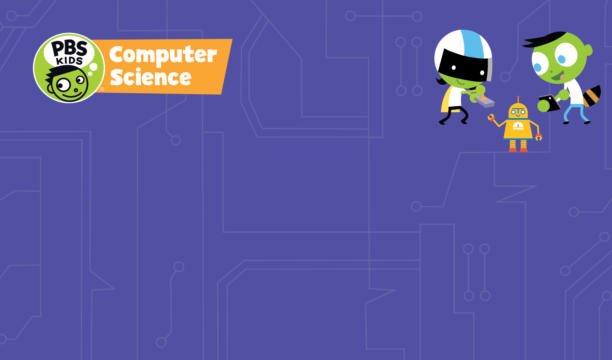Making the Classroom Ready for Educational Media
The school year is coming! The school year is coming! As schools across the country are opening for a brand new year, excitement mounts. Teachers are making new classroom arrangements and bulletin boards. Administrative teams are organizing new schedules and training new team members. My excitement always comes from the fact that every year I get a brand new fresh start and every year I have the ability to help another group of students become excited about learning. This is a great time to think about the new ways you want to add technology to your classroom and create a media rich environment from the moment your new students enter the room.
Let them choose!
Students are engaged with the content when the content is introduced in a variety of ways and their learning can be exhibited through various modalities. Have students show you what they know in ways that appeal to them.
- If you are learning about the alphabet or sight word, have students go on an alphabet or word scavenger hunt through your classroom. Students could use an app/website like Seesaw to take pictures of the letters or words and then use Seesaw’s annotation tools to trace the letters and audio record themselves saying the letters aloud.
- Students could also video record their hunt and talk their way through their investigative process of finding the letters.
- In Seesaw they can show their learning with video, audio, photos, typing, and drawing all within one app. With these tools, students can really choose the way the exhibit their learning.
Let them Explore!
Before you read a book or teach a new science or social studies concept, don’t forget the background knowledge! Every student in your classroom will have a different understanding of the world outside of their family, so this is an opportunity to build their background knowledge to increase comprehension and understanding.
- If you are going to launch your year with a unit on apples, head on over to PBS LearningMedia and choose one of the many videos that show students what an apple orchard looks like and how it operates.
- Use Google Earth to add understanding to a book or video with a specific setting. As you investigate the landscape in Google Earth, talk about the concepts of geography and how people’s lives are affected by the geography of their homes.
- To add even more excitement, in Google Earth, click on the Pegman in the bottom right corner to access 360 degree photos of the area. Click on these and use the classroom projector to explore and discuss the area.
- This year, I plan on showing my teachers how to use the new PBS show Molly of Denali in their classrooms to enhance their teaching of informational texts. When we introduce it, we will use Google Earth to investigate Alaska and will compare and contrast our home with Molly’s!
- If you are doing a unit on insects you may want to use the Augmented Reality section of Google Expeditions. Using a newer phone or a tablet, the teacher can scan a QR code and it looks as if a honeybee is floating above the point. Students can explore it from all directions and really get an amazing view to help build their knowledge.
- If you are learning about animals that are under the sea, start class by showing your students a live feed of underwater in the Florida Keys! You can head on over to YouTube and search for live feeds on anything, but my favorite website is Explore.org! They have a ton of live animal and nature cams and the students love that they are seeing things in real time!
- One of my favorite ways to help children explore a topic is to let them talk to the experts. If you are studying an animal in class, have the students Skype or Google Hangout with a zookeeper or a veterinarian. If your students are building pasta bridges, use Twitter or Facetime to connect them with a structural engineer. You do not always have to be the expert in the class but your students will gain amazing background knowledge if you can connect them with the experts!
Let them talk!
So many times in school we are asking students to be quiet but we also know that some of the best learning comes from allowing students to talk through their learning.
- Add math accountability talks to your day! Students could pair up and explain their thought process on a problem with each other and use a tool like Flipgrid to record their talk. Using Flipgrid to record the talks would allow you to watch their talks later and find exemplar talks to model this skill to other students.
- When students research a topic, use Book Creator to make a digital book of their information.
- To explain their research topic, students can add text, images, videos, and audio to their digital books. Imagine the pride in learning if they were able to create their own book with their own voices!
- Students could also use a tool like Google Slides to create a book of their learning. Google recently added an “Insert Audio Tool” to slides. Students could explain a topic through images and text on each slide and then add an audio recording to further enhance their project.
Let them share!
Learning new things is fun, but sharing your learning with a greater audience is exciting.
- This year, instead of a paper newsletter, have your students share their learning and activities in your classroom through a website such as Google Sites or a Microsoft Sway. You could add photos and videos and examples of work. You could even have your students help build and write the page with you.
- You could also connect with parents through apps such as Class Dojo, Remind, ClassTag, and many more.
- Seesaw also offers a parent app to accompany its digital portfolio. Not only can parents see their student’s learning once it has been posted, they can also leave feedback for their child as well!
A new school year is always a wonderful time to try something new and take a risk. My suggestion decide on one aspect of your teaching you would like to enhance with digital media and tools and run with it. Make yourself an expert in that media or tool and your students can only benefit from it!
Join the PBS Teachers Community
Stay up to date on the latest blog posts, content, tools, and more from PBS Education!



